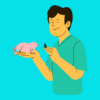Introduction
Welcome to an exploration of a fascinating and intriguing pet behavior: dogs chattering their teeth around their feline counterparts. As dedicated pet owners, we strive to understand the many unique ways our pets communicate with us and the world around them. This article aims to shed light on this particular behavior, as well as underscore the importance of understanding our pets’ actions.

The Science Behind Teeth Chattering
Teeth chattering in dogs, while seemingly odd, is a behavior rooted in their physiology. It is a rapid, involuntary movement of the jaws, often accompanied by clicking or grinding sounds. This behavior has been observed in various situations and can be attributed to a range of causes. To better understand why dogs might chatter their teeth around cats, let’s first explore some of the general reasons behind teeth chattering.
- Cold temperatures: Just as humans may shiver when they’re cold, dogs may chatter their teeth as a physiological response to low temperatures. In this scenario, the body is attempting to generate heat through rapid muscle contractions.
- Excitement: Dogs sometimes chatter their teeth when they’re excited, such as during playtime or when they anticipate a favorite activity. This type of teeth chattering may be a form of self-regulation to help the dog manage their excitement levels.
- Pain or discomfort: Teeth chattering can be an indication of pain or discomfort, particularly when it comes to oral health issues. In these cases, the chattering may be a response to dental pain or an attempt to dislodge something that’s stuck between the teeth.
- Stress or anxiety: Finally, dogs may chatter their teeth when they’re feeling stressed or anxious. The behavior may be a coping mechanism that helps them navigate unfamiliar or uncomfortable situations.
Feline Frenzy: How Cats Play a Role
Dog-cat interactions can vary greatly depending on the personalities, temperaments, and experiences of both animals. In some cases, dogs and cats may form close bonds, snuggling and playing together. In other instances, they may maintain a cautious distance or engage in a love-hate relationship. One important factor to consider when examining dog-cat interactions is how the dog’s heightened senses come into play.
Dogs Possess Remarkable Sensory Abilities That Are Often Accentuated Around Cats Due to Their Inherent Differences:
- Smell: A dog’s sense of smell is significantly stronger than that of a human and even more powerful than a cat’s. When in the presence of a cat, a dog’s olfactory system is bombarded with new and intriguing scents that could trigger various reactions.
- Sight: While dogs may not have the same level of color perception as humans, they possess excellent motion detection abilities. The quick, unpredictable movements of a cat can easily capture a dog’s attention and elicit a response.
- Hearing: Dogs have an acute sense of hearing and can detect sounds at much higher frequencies than humans. Cats tend to make soft, high-pitched noises that may pique a dog’s interest or even startle them.
Heightened Senses May Contribute to Teeth Chattering in Dogs Around Cats in Several Ways:
- Excitement: The novel sensory stimuli that cats provide could cause excitement in dogs, leading to teeth chattering as they attempt to manage their arousal levels.
- Anticipation: A dog may chatter with their teeth in anticipation of a potential chase or play session, triggered by the cat’s movements or vocalizations.
- Anxiety or stress: If a dog is not accustomed to being around cats or has had negative experiences with them, their heightened senses could contribute to anxiety or stress, leading to teeth chattering as a coping mechanism.
- Predatory instinct: In some cases, the heightened sensory input from a cat may activate a dog’s predatory instincts, causing them to chatter with their teeth as they prepare for action.
Decoding Doggie Dialect: What Teeth Chattering Might Mean
As we’ve explored, teeth chattering around cats can signify a variety of emotions or intentions in dogs:
- Excitement or anticipation: The dog may be eager to play or interact with the cat, causing their teeth to chatter as they try to contain their excitement.
- Predatory behavior: The teeth chattering might be an indication of the dog’s predatory instincts being triggered by the presence of the cat.
- Fear or anxiety: If the dog feels uneasy or threatened by the cat, they may chatter their teeth as a stress response.
- Playfulness: Teeth chattering could be part of the dog’s playful demeanor, expressing their joy and enthusiasm for interacting with the cat.
To better interpret your dog’s teeth chattering, pay close attention to their body language:
- Look for signs of relaxation or tension in their body posture.
- Observe their tail, ears, and facial expressions for indications of their emotional state.
- Consider the context of the interaction and your dog’s past experiences with cats.
Ensuring a Paws-Itive Environment for Both Pets
Monitoring pet interactions is crucial for maintaining a safe and harmonious environment for both dogs and cats.
To create a peaceful living space, consider the following suggestions:
- Gradual introductions: Introduce your pets to each other slowly and under supervision to minimize stress and potential conflicts.
- Separate feeding and sleeping areas: Provide separate spaces for eating and resting to help prevent territorial disputes and ensure each pet feels secure.
- Providing individual attention: Spend quality time with each pet to foster strong bonds and promote well-being.
- Encouraging appropriate play and interaction: Supervise play sessions and reinforce positive interactions between your pets.
If teeth chattering persists or escalates, consult a veterinarian or a behaviorist to rule out any underlying health issues or to develop a plan for addressing the behavior.
- Why Does My Dog Bark at Cat Litter Box Sometimes?
- Why Does Focal Motor Seizure Dog Teeth Chattering Occur?
Conclusion
In this article, we’ve explored the possible reasons behind dogs chattering their teeth around cats and how to interpret this behavior through body language. We’ve also discussed strategies for creating a harmonious living environment for both pets.
As pet owners, it’s essential to appreciate the unique and sometimes mysterious behaviors of our beloved companions.
Remember, with patience, understanding, and a little bit of humor, it’s possible for dogs and cats to live together in purr-fect harmony.

Doctor of Veterinary Medicine (D.V.M.) at Nation Taiwan University,Master of Science (M.S.) in Biomedical Engineering at National Taiwan University of Science and Technology




